London planetree (Platanus acerifolia hybrida) Profile
Written by Iris
Aug 19 2021
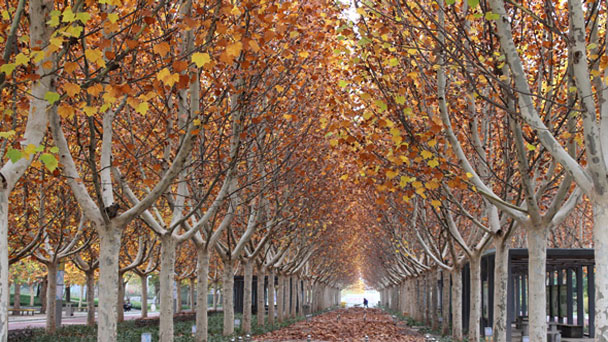
London planetree (Platanus acerifolia hybrida) are fast-growing shade trees. London planetree (Platanus acerifolia hybrida) has colorful deciduous bark that can be olive, yellow and ivory. London Planetree is a classic shade tree with disease resistance and tolerance to urban pollutants. London Planetree is a very long-lived tree that can be passed down from generation to generation.
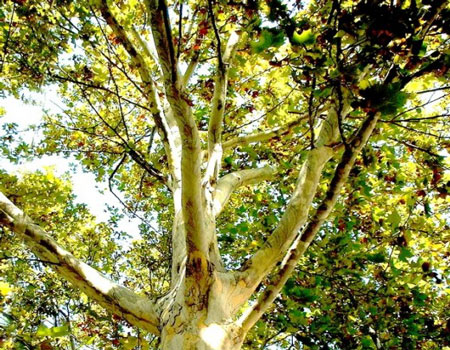
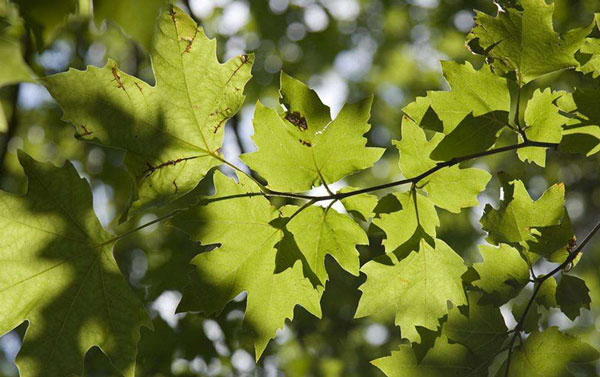
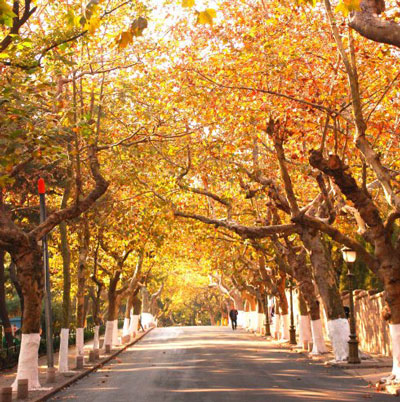
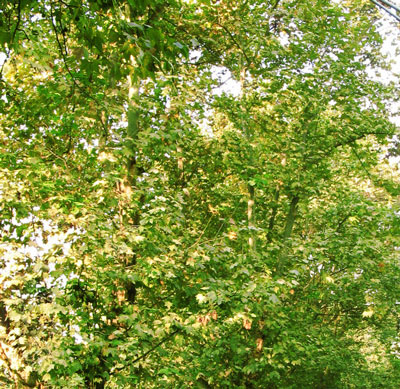
Older hardwood cuttings, including second year and older wood, can also usually be rooted easily. It is common for prunings used as beansticks to root in the open. Cuttings can also be taken with soft new season growth in summer. I have rooted cuttings taken in June and later, in close conditions under polythene covers, overwintered thereafter in sheltered conditions. A study has shown that the highest percentage takes are obtained from basal soft cuttings, taken in July, and rooted under mist.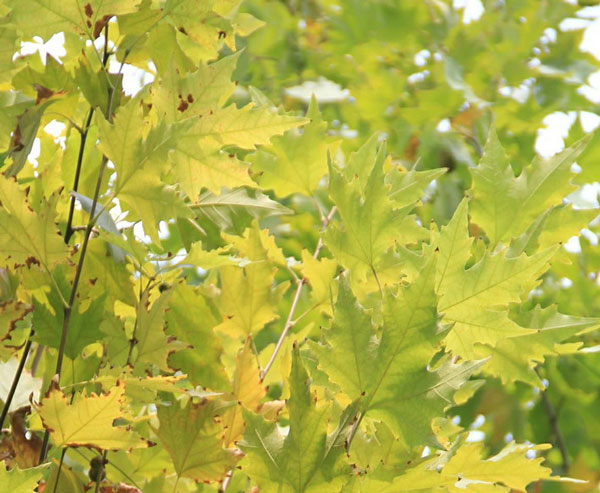
Some bird species including house finches, warblers and Nuttall woodpeckers depend on the high canopy of trees in the Sycamore family for nesting sites, and to forage for insects like aphids. The seedballs found on the London Plane are a favorite of red-tailed hawks, juncos, purple finches, goldfinches and squirrels. Cavity-nesting birds such as flycatchers and owls will sometimes nest inside the nearly hollow trunks of older trees.
'Bloodgood' is one of the more popular varieties, growing around 60 feet tall and tolerating undesirable environmental conditions, including drought and poor soil.
'Columbia' sports dark green foliage and grows to roughly 50 feet. It resists mildew and anthracnose and can tolerate heavy pruning.
'Liberty' is a quick-growing variety with a pyramidal shape that reaches around 50 feet. It has a good tolerance for mildew, anthracnose, heat, and drought.
'Metzam' (or 'Metroshade') grows to a strong 70 feet. Another disease-resistant cultivar, its leaves emerge with a reddish cast but quickly become a lustrous green.
'Mirkovec' is a dwarf variety with a shrubby growth habit and unusual lobed leaves with pink, cream, and bronze coloring.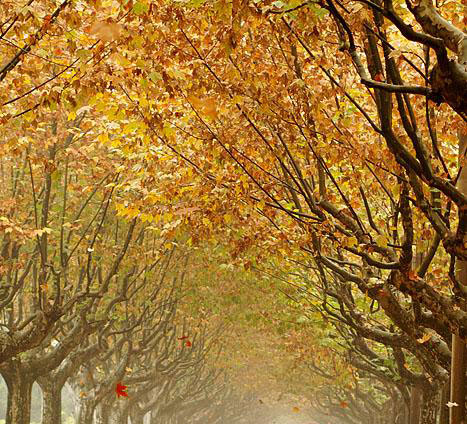
London planetree (Platanus acerifolia hybrida) PictureLondon planetree (Platanus acerifolia hybrida) InfoLondon planetree (Platanus acerifolia hybrida) HistoryEcological Habits of London planetree (Platanus acerifolia hybrida)London planetree (Platanus acerifolia hybrida) Distribution AreaHow to Grow and Care for London planetree (Platanus acerifolia hybrida)Uses of London planetree (Platanus acerifolia hybrida)Varieties of London planetree (Platanus acerifolia hybrida)London planetree (Platanus acerifolia hybrida) Common Pests/DiseasesLondon planetree (Platanus acerifolia hybrida) Companion Plants
London planetree (Platanus acerifolia hybrida) Picture

London planetree (Platanus acerifolia hybrida) Info
| Botanical Name | Platanus × acerifolia |
| Common Name | London planetree, London plane, hybrid plane |
| Plant Type | Deciduous tree |
| Mature Size | 75 to 100 feet tall and 60 to 75 feet wide |
| Sun Exposure | Full sun to part shade |
| Soil Type | Loamy, sandy, or clay |
| Soil pH | 3.7 to 6.5 |
| Bloom Time | April |
London planetree (Platanus acerifolia hybrida) History
The main character in Handel’s opera Xerxes makes a fool of himself in the opening act, pouring out his love as he sings to a plane tree in the aria “Ombra mai fu,” (“never sweeter was the shade of any dear and lovable plant.”) That may seem a bit excessive, but plane trees do have many fine characteristics to recommend them, including shade and longevity. A tree in the genus Platanus, the London Plane hybrid was most likely a natural result of the two parent trees being planted close to each other; it was first recorded as occurring in Spain in the 17th century where Oriental Plane and American Plane had been planted in proximity to one another. In Oregon, London Plane trees can be found in Salem, Eugene and Corvallis, and dozens of London Planes grow in Portland’s downtown Transit Mall where they provide a cooling canopy for pedestrians. In the 70’s, project engineers originally built root wells in the basements of downtown properties to accommodate them, basements which often extended under the sidewalk. “They're a pretty durable tree,” says Portland State University’s Joe Poracsky, “they're pruned up high, provide good shade and make sense for a pedestrian bus mall.
Ecological Habits of London planetree (Platanus acerifolia hybrida)
Large deciduous, extremely hardy tree, london planetree (Platanus acerifolia hybrida) grows up to 1 metre per year. London planetree (Platanus acerifolia hybrida) is tolerant of harsh city conditions, air pollution, compacted and poor soils. London planetree (Platanus acerifolia hybrida) provide popular shade tree for parks, streets and large gardens. London planetrees’ (Platanus acerifolia hybrida) bark is mottled with patches of silver-grey. London planetree (Platanus acerifolia hybrida) has a deep root system.It became popular in the U.S. when it was learned that it withstood disease and environmental challenges better than its parent sycamore. Hardy in zones 5-8, the London planetree prefers rich, moist, well-drained soils, but tolerates dry, alkaline clay soils, too, and is tolerant of hot, dry climates, so it does well in Colorado everywhere except in higher elevations.
London planetree (Platanus acerifolia hybrida) Distribution Area
Platanus × acerifolia, commonly called London planetree, is a hybrid cross between American sycamore (P. occidentalis) and Oriental planetree (P. orientalis). The original cross may have occurred as early as the 1640s, after which this tree became widely planted in London and other major European cities because of its perceived tolerance for urban pollution. City planting spread to America where this hybrid today is common in such distant locations as Brooklyn, New York and San Francisco, California.
How to Grow and Care for London planetree (Platanus acerifolia hybrida)
How to Grow London planetree (Platanus acerifolia hybrida)
- With Seeds
- With Stem Cuttings
Older hardwood cuttings, including second year and older wood, can also usually be rooted easily. It is common for prunings used as beansticks to root in the open. Cuttings can also be taken with soft new season growth in summer. I have rooted cuttings taken in June and later, in close conditions under polythene covers, overwintered thereafter in sheltered conditions. A study has shown that the highest percentage takes are obtained from basal soft cuttings, taken in July, and rooted under mist.
How to Care for London planetree (Platanus acerifolia hybrida)
- Light
- Soil
- Water
- Temperature and Humidity
- Fertilizer
- Pruning

Uses of London planetree (Platanus acerifolia hybrida)
Wildlife UsesSome bird species including house finches, warblers and Nuttall woodpeckers depend on the high canopy of trees in the Sycamore family for nesting sites, and to forage for insects like aphids. The seedballs found on the London Plane are a favorite of red-tailed hawks, juncos, purple finches, goldfinches and squirrels. Cavity-nesting birds such as flycatchers and owls will sometimes nest inside the nearly hollow trunks of older trees.
Varieties of London planetree (Platanus acerifolia hybrida)
The hybridization of the London planetree is thought to have occurred accidentally sometime during the 17th century in either Spain or London when the American sycamore and Oriental planetree were planted close to one another. Since then, several cultivars have been developed.'Bloodgood' is one of the more popular varieties, growing around 60 feet tall and tolerating undesirable environmental conditions, including drought and poor soil.
'Columbia' sports dark green foliage and grows to roughly 50 feet. It resists mildew and anthracnose and can tolerate heavy pruning.
'Liberty' is a quick-growing variety with a pyramidal shape that reaches around 50 feet. It has a good tolerance for mildew, anthracnose, heat, and drought.
'Metzam' (or 'Metroshade') grows to a strong 70 feet. Another disease-resistant cultivar, its leaves emerge with a reddish cast but quickly become a lustrous green.
'Mirkovec' is a dwarf variety with a shrubby growth habit and unusual lobed leaves with pink, cream, and bronze coloring.

London planetree (Platanus acerifolia hybrida) Common Pests/Diseases
London planetree was originally thought to be much more resistant to sycamore anthracnose than its American parent, however this is no longer entirely clear since anthracnose resistance seems to vary considerably among various hybrid plants. Some reportedly resistant cultivars, such as ‘Columbia’ and ‘Liberty’, are available. Another disease problem of concern is cankerstain which can be fatal. Canker, leaf spot and powdery mildew may also occur. Insect visitors include borers, scale, Japanese beetles, caterpillars and mites. When grown as a lawn tree, litter from twigs, large leaves, bark and fruiting balls can pose significant clean-up problems.London planetree (Platanus acerifolia hybrida) Companion Plants
The London Planetree should be paired with low plantings that don’t distract from the exfoliating bark. Consider using Gro-Lo Sumac to provide a different texture and fall color at the base, or use small stature Hostas or Coralbells if you prefer perennials.
Latest Updated
- Benefits of Bugleweed - 7 Science-backed Health Benefits
- Bugleweed Dangers & Side Effects - Is It Poisonous?
- How to Plant Evergreen Trees - What You Should Know
- When to Plant Evergreens - Grow Guide for Evergreen Trees
- 12 Wonderful Evergreen Shrubs for Your Garden
- 12 Popular Evergreen Plants with Pictures for Beginners
- When And How To Prune A Lilac Bush Like a Pro
- How to Grow & Care for Lilac Vine (Hardenbergia Violacea)
- Japanese Lilac Tree (Syringa Reticulata) Care & Propagation Guide
- Shumard Oak Pros and Cons - What to Know
Popular Articles
- Winter maintenance of Antirrhinum Majus
- How to Grow Terminalia Mantaly Tree
- How to Grow and Care for Crossostephium Chinense
- How to grow Antirrhinum Majus in spring
- Peristeria Elata (Dove Orchid) Profile: Info & Care Guide
- Underwatered Snake Plant (Sansevieria Trifasciata) - Signs And How To Fix
- How to Care for Brazilian Jasmine Plant (Mandevilla Sanderi)
- How to Grow & Care for Graptopetalum Purple Delight in Summer
- Rosa Chinensis (China Rose): Plant Growing & Care Tips
- How to Care for Baby Sun Rose (Aptenia Cordifolia)